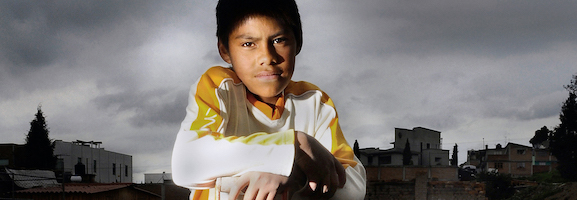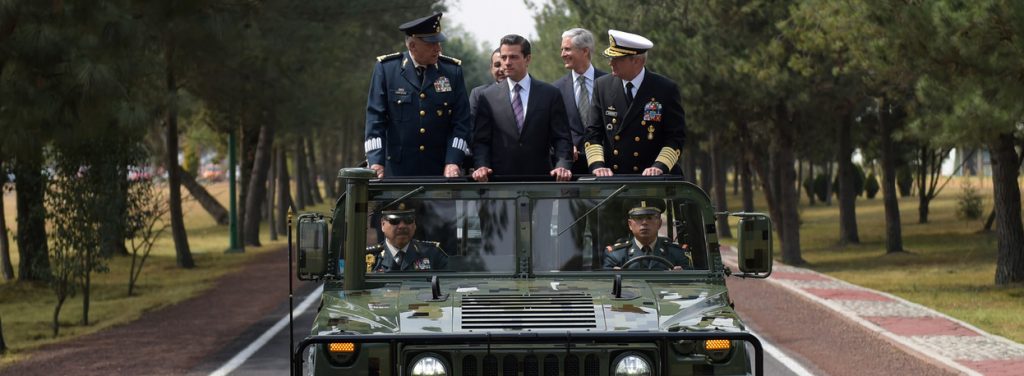home » violence
Articles about "violence"
Temáticas
Vol 5 No 10 (2022)
Care Strategies Against Sexist Violence by Men in Public Spaces of Mexico City
- Paola Flores Miranda
Keywords: feminist self-defense, public spaces, women, violence.
The present article picks up on the results of a Participatory Investigation Action with a Feminine Perspective, with an in-depth exploration of the experience of women in public spaces and how, using it as a starting point, their bodies not only resent, but also react to a hostile environment which requires them to be in a constant state of alert. This article emphasizes the awareness of these violences and their implication in women’s urban practices, specifically when generating protection and care strategies. From individual or collective everyday practices in nearby spaces to those that have been created and consolidated by activism, which exposes the different ways in which women organize and face an everyday life in which fear and violence prevail.
Temáticas
Vol 5 No 9 (2022)

Mending the Image: Subjectivities and Desires in the Photographic Archives of Michoacán, México
- Gabriela Zamorano Villarreal
Whis essay examines photomontage practices in rural contexts of Michoacán, Mexico, in order to ask how social uses of photography are intimately linked to collective subjectivities and affects of loss, between histories of migration and recurrent cycles of violence. These visual practices cannot be understood without paying attention to intrinsic aspects of photographic technology-such as its indexical character, its materiality, its artificiality, and its temporal anchoring. Here a careful reading of the concept of "the obtuse" proposed by Roland Barthes reveals how photomontage techniques, in the hands of local photographers, generate visual effects and dislocations through the manipulation of subtle details that contribute to recreate, but also to subvert, the "ways of looking" among the inhabitants of the region.
Temáticas
Vol 4 No 8 (2021)

Composition of Narcocorridos in Real Time: Sociomusical Construction of October 17th, the Culiacanazo
- César Jesús Burgos Dávila
- Julián Alveiro Almonacid Buitrago
The aim of the article is to understand the sociomusical processes and practices of the northern ensemble Arte Norte in the creation of the corrido "Ovidio Guzmán, el Rescate". The corrido recounts the violent events of October 17, 2019, following the failed capture of Ovidio Guzmán in Culiacán, Sinaloa. We interviewed the composers and musicians to delve into the experiences and the construction of musical meaning about the culiacanazo. We present the results in three sections: the musicians' experiences, sources of inspiration and motivations for composing the corrido; we present the strategies and immediacy of their composition and dissemination practices; finally, we address the context, warnings and risk management on the part of the musicians.
Realidades socioculturales
Vol 4 No. 7 (2021)
Social death and violent life chances
- Henrik E. Vigh
Keywords: Africa, civil war, youth, social death, violence.
In this article I examine the military recruitment of urban youth in West Africa and analyze their involvement in conflict as a "social navigation". I propose a perspective on youth that assumes that this generational category is both a social process and a position. The article illustrates how urban youth navigate their social ties and the options that arise from war situations to escape the social death that otherwise characterizes their situation. By describing youth as a time of stagnation and tearing apart of the social existence of young people in Bissau, Guinea-Bissau, it is clear how war becomes an area of possibilities, rather than just a space of death. Thus, the concept of social navigation offers us penetrating insights into the interplay between objective structures and subjective initiative. This analytical perspective allows us to make sense of the opportunistic, sometimes fatalistic, and tactical ways that young people struggle to broaden their horizons of possibility in a world of conflict, turmoil, and dwindling resources, and lets us see how conflict coping it becomes a question of balances between social death and violent opportunities for life.
Realidades socioculturales
Vol 3 No. 5 (2020)
Adolescent women who commit violent crimes in Mexico
- Elena Azaola
Keywords: adolescents, crime, women, violence, vulnerability.
[drpcap] E [/ dropcap] This paper aims to reflect on the specific characteristics of violent crimes in which adolescent girls participate in Mexico. It is based on a study that included conducting 730 interviews with adolescents, men and women, deprived of their liberty in 17 states of the Republic. The question that motivated this study was: is there a relationship between the conditions of vulnerability that adolescents experienced in their early childhood (Adverse Child Experiences) and the violent crimes they committed? In this work we cite the testimonies of nine adolescent women that allow us to analyze the features that distinguish the violent behaviors in which they participate.
Coloquios interdisciplinarios
Vol 2 Num 4 (2019)

Inequalities and the re-politicization of the social in Latin America
- Juan Pablo Pérez Sáinz
The social question in Latin America has been depoliticized, since the 1980s, from the conception of deprivation imposed by the prevailing approaches to poverty. Although later, due to the importance acquired by the problem of inequality, the question of power could not be ignored, a perspective was imposed that has limited the understanding of conflict. In the present text and from an alternative proposal to address inequalities, where power and conflict gain prominence, we seek to re-politicize the social. In this regard, two sets of problems are addressed. The first has to do with the dynamics of deep disempowerment that the new model of globalized accumulation has generated, sustaining the (neo) liberal order, and that has led to a not inconsiderable part of the subaltern sectors being cornered in a situation of marginalization. Social. The second is that, despite this, there are responses from these sectors to resist this disempowerment and even partially reverse it. Among these responses, the following stand out: violence, migration, religiosity and collective action. It concludes with reflections on the relevance of thinking about inequalities from this perspective to see how the social, with the (neo) liberal order, has been re-politicized in a broad and profound way.
Realidades socioculturales
Vol 2 Num 4 (2019)

Who are the narcos asking? Emancipation and justice in drug culture in Mexico
- Jose Carlos G. Aguiar
DInce the 1990s, drug culture in Mexico has been studied as the symbolic repertoire of the “criminal town” that portrays the daily life of drug traffickers. Their expressions are understood as a reliable record of the traffickers' lives, with a transgressive aesthetic that presents excess and ostentation as forms of domination. In this article, forms of spiritual protection among drug traffickers are studied in order to debate the narcoculture. The ethnographic material was collected between 2014 and 2017 in the states of Hidalgo and Michoacán, through participant observations and in-depth interviews. The protection of popular saints such as Santa Muerte, Angelito Negro and San Nazario, allows us to understand how narcoculture is a resource for social emancipation, legitimizing the definitions of justice and sovereignty of organized crime.
Temáticas
Vol 2 No 3 (2019)
Fleeing violence: the hidden victims of the war in Mexico, the case of forced internal displacement
- Brenda perez
- Montserrat Castle
Keywords: human rights, forced internal displacement, drug war, recognition, violence.
Dithin the framework of violence and human rights crisis in Mexico, the foundations have been laid for a new wave of forced internal displacement in the country, leaving thousands of Mexican families in extreme vulnerability and in complete abandonment. In the face of this, the Mexican State has maintained a reluctant position to recognize the problem and, consequently, has not taken the pertinent actions to improve the quality of life of this population, making it impossible for them to effectively exercise their human rights. The following text presents the approach to the problem in Mexico from the experience of the Mexican Commission for the Defense and Promotion of Human Rights (CMDPDDH), a civil society organization that works in research, analysis, visibility, advocacy and comprehensive support to victims of the phenomenon.
Temáticas
Vol 1 Issue 2 (2018)

Images of the gang body. Representations of identity from a collaborative dialogue
- Rogelio Marcial
Whe text exposes the general conditions and some of the findings of three investigations with violent gangs in the metropolitan area of Guadalajara conducted between 2013 and 2016, in order to contextualize the identity representations of the gang body by young people belonging to these corner groups. From a collaborative dialogue, carried out through group interviews and jointly constructing the central ideas presented here, issues related to masculinity, emblems of power, physical appearance and gang loyalty are highlighted, as well as those agreements we reached in the joint construction of their conceptions of the body and its use from the gang. It is considered that, although this represents constant danger and aggression, their bodies must always clearly enunciate belonging to a group and cultural adscription, strength for direct physical confrontations, the potential to protect their own, and the demonstration that they are men above all else.
Discrepancias
Vol 1 Issue 1 (2018)

Discrepancies around the Internal Security Law
- Alejandro Madrazo Lajous
- Julia Estela Monárrez Fragoso
- Salvador Maldonado
- moderator Manuela Camus Bergareche
In December 2006, the president of Mexico, Felipe Calderón, declared the “war against drugs” and called out the Army to confront criminal groups in the streets. This public security task does not correspond specifically to the functions of the Armed Forces and, among other consequences, has led to a disproportionate increase in homicides and disappearances in the country. Despite this, the Internal Security Law is presented, which institutionalizes this militarization process and justifies, regulates and legalizes the role of the armed forces in the fight against organized crime. There are many questions that arise in this context and we hope that the guests of this Discrepancies section will contribute to animate the debate, perhaps to clarify it.






